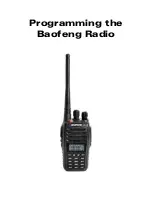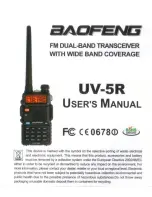
05-4446A01, Rev. E
Mercury Reference Manual
171
APs” on Page 16
. For additional isolation, separate directional
antennas with as much vertical or horizontal separation as is practi-
cal.
• The power output of all radios in a system should be set for the low-
est level necessary for reliable communications. This reduces the
chance of causing unnecessary interference to nearby systems and
also keeps power consumption to a minimum.
Configuring Mercury 3650 for Shared Spectrum Use
(Contention-Based Protocol)
While the Mercury 3650 has been designed to reduce the effects of inter-
ferers outside of the RF channel, cases may arrive where interferers may
cause undesired operation. In the case of WiMAX interferers, proper
configuration of the radio may reduce these effects.
The radio employs a WiMAX contention protocol that effectively
reduces the amount of interference the network may cause to other
co-located WiMAX networks using the same channel. In addition,
proper configuration of the radio will help to reduce the effects of other
WiMAX hardware attempting to do the same.
Remote radios receive scheduling information from a central base sta-
tion (AP). This scheduling information destined for a given remote
includes when to transmit, the duration of transmission, and modulation
selection. In the event the intended Remote unit is unable to receive or
interpret this information from the AP, the Remote will persist in receive
mode only.
The radio allows the installer to configure an Approved Access Point list
that contains the MAC addresses of desired AP radios in the network.
When an Access Point sends scheduling data to the Remote unit, the
Remote compares the MAC Address of the AP to this approved MAC
address list, and discards the scheduling information if it has originated
from a “foreign” network.
In order to maximize the performance of a shared network, the fol-
lowing configuration is recommended:
1. The Mercury 3650 network should be set to operate on the same
channel frequency as the network the channel is shared with. Slight
offsets in frequency between two collocated systems will cause
on-channel interference that is not decodable by either system.
Having both systems operate on the same frequency allows the radio
to decode WiMAX scheduling information from the interfering AP.
2. Configure the approved AP list using the AP Locations file as speci-
fied in the
AP Location Push Config Menu on Page 60
. After the
Remote unit has received scheduling information from the interfer-
ing network, it will compare the MAC address of this radio to its AP
Summary of Contents for Mercury 900
Page 9: ...viii Mercury Reference Manual 05 4446A01 Rev E...
Page 11: ...2 Mercury Reference Manual 05 4446A01 Rev E...
Page 31: ...22 Mercury Reference Manual 05 4446A01 Rev E...
Page 155: ...146 Mercury Reference Manual 05 4446A01 Rev E...
Page 157: ...148 Mercury Reference Manual 05 4446A01 Rev E...
Page 171: ...162 Mercury Reference Manual 05 4446A01 Rev E...
Page 185: ...176 Mercury Reference Manual 05 4446A01 Rev E...
Page 201: ...192 Mercury Reference Manual 05 4446A01 Rev E...
















































